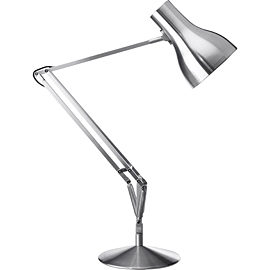Monday, February 28, 2011
Reading Reflection 08
The last two chapters of Heskett's book talked about how we have to look at design and how they relate to their environments in which they exist in and their relationships with other objects. It also talked about future thinking. Designers are not to be designing for today but for tomorrow, and the days after that. This should always be in the mind of a designer because it will better connect humans together and will move us in a forward direction rather than being stagnant in our thinking.
Journal 08
Coleman Project - Personal Documentation
Team Members:
Mary Polanski
Aaron Gegas
Michael Bickley
Amberly McGee
Sarah Jerels
Kerry Moore
-- I feel like the team as a whole has been making great progress. We initially came up with a few ideas for the project and talked about their pros and cons. Once we got past that area of thinking, we took a vote and chose one project to pursue as a team. Most of the members on the team contribute ideas to the design and concept as a whole and really help get the project off to a good start.
-- My contribution to the team was initially okay, but it has been getting better with bringing new ideas and concepts the table to help further the process. For future meetings I expect to contribute even more with speaking up about my ideas and sharing my thoughts.
-- Part of the documentation so far that we have done has been through researching, but some of us did have sketches to bring to the group meeting.
Monday, February 21, 2011
Reading Reflection 07
The last few chapters of Cradle to Cradle talked about 3 main points. The first talked about how the world has gone from being productive in waste management and recycling through mother nature to wasting practically everything that we use and not putting it to good use anymore. The next point talked about how we should be using the materials and resources that exists around us instead of using the "popular" resources that may not work well in the environment in which we live in. Finally, the last point illustrated the ways that we could put all of this useful information to use instead of sitting round and complaining about it, not doing anything about the situation.
Sunday, February 20, 2011
Class Reflection 07
I really liked past couple of lectures because the guest speakers really gave me a great view of what kind of work designers do while in school and even once graduated. Though it would be much time dedication, I know the experiences and end results will be worth it all.
Journal 07
Online Scavenger Hunt
Links to the websites of 5 manufacturers or retailers who specialize in outdoor camping and recreation products.Altrec - http://altrec.com/
US Outdoor - http://www.usoutdoorstore.com/
Back Country - http://www.backcountry.com/
Cabela's - http://www.cabelas.com/
Camping World - http://www.campingworld.com/
Links to the websites of 5 manufacturers or retailers who specialize in indoor home goods products.
Home Goods - http://www.homegoods.com/index.asp
Crate & Barrel - http://www.crateandbarrel.com/
Ace Hardware - http://www.acehardware.com/home/index.jsp
Lowes - http://www.lowes.com/
Ehome - Furnishing - http://www.ehome-furnishing.com/
A indoor home good is any item that exists inside one's home that serves the purpose of making living at home more efficient and less of a hassle.
Wednesday, February 16, 2011
Journal 06
DESIGN & COLOR
Color is an extremely important part of everyone's lives whether they recognize it or not. Color impacts our emotions, thoughts, and perceptions of the world in infinite ways. To understand color is to understand the true balance of nature and life because it is color that provides the world with both boundaries, expectations, and information on co-existence. Color is everywhere and inevitable, and to design to the best of our abilities, we must learn how color plays a role in every aspect in everyone's lives because it is the people for whom we are designing.Color Theory for Designers
http://www.smashingmagazine.com/2010/01/28/color-theory-for-designers-part-1-the-meaning-of-color/
This article talks about the different colors and how they affect every human's emotions, thoughts, and perceptions. Each color can portray very different messages and they greatly impact how we think of the world.
Natural Selections: Colors Found in Nature and Interface Design
http://www.boxesandarrows.com/view/natural_selections_colors_found_in_nature_and_interface_design
Nature is truly the mother of everything that exists in our world today. We may not realize it, but all of our influences and creativity all in fact com from Nature herself, which includes color and how it plays a role in the lives of the millions upon millions of creatures.
Find Your Color: The Role of Color Psychology
http://www.livingartsoriginals.com/infocolorsymbolism.htm
This article discusses the symbolism behind each color and how most humans use these symbols to live their lives. Color symbolism can be found in clothing, spirituality and flags of nations and what they represent.
Color Theory for Business and Life
http://www.planetenjoy.com/information/962_color-theory-for-business-and-life
The business world has understood the concepts of color and how it can have great influences on people. We see it everyday everywhere we go and it is so well utilized that we hardly notice it a all.
Color Meanings
http://desktoppub.about.com/cs/color/a/symbolism.htm
This article explored the relationships between different colors; how they can compliment or contrast each other. It also showed how some colors can look better with another color around it.
Tuesday, February 15, 2011
Monday, February 14, 2011
Reading Reflection 06
Chapter 1: A Question of Design
This chapter mainly talked about how many of the things that are being designed are hazardous and dangerous not only to the environment but to humans. The authors ask, "Why are we still designing these things this way?"
Chapter 2: Why Being Less Bad is No Good
The authors explained in this chapter that even though some people may not be as harmful as others or may even reduce waste and toxins, the waste and toxins are still building up, just at a slower rate.
Chapter 3: Eco-effectiveness
This chapter basically explained how producing things that may claim to be eco-friendly are in fact just as bad for the environment because it takes different chemicals to produce these things and they harm the environment.
This chapter mainly talked about how many of the things that are being designed are hazardous and dangerous not only to the environment but to humans. The authors ask, "Why are we still designing these things this way?"
Chapter 2: Why Being Less Bad is No Good
The authors explained in this chapter that even though some people may not be as harmful as others or may even reduce waste and toxins, the waste and toxins are still building up, just at a slower rate.
Chapter 3: Eco-effectiveness
This chapter basically explained how producing things that may claim to be eco-friendly are in fact just as bad for the environment because it takes different chemicals to produce these things and they harm the environment.
Class Reflection 06
Though I thought the movie was extremely boring and failed to stay awake through it all, I found the information pretty useful and important. As possibly a future designer, it is crucial to know and be familiar with the basics of patents, copyrights, and legal issues in order to successfully design without fault.
Monday, February 7, 2011
Journal 05
50 Things About a Trip to the Library
- There are 11 floors
- The main entrances aren't carpet
- The books are different colors
- The books are different sizes
- The books have different topics/subjects
- The chairs are comfortable
- There are stairs on either side of the building
- There are elevators on all sides of the building
- The ceilings are tall
- Glass serves as barriers in many places
- The floor tiles are glossy
- Many of the colors in the library are neutral or not bright
- The sunlight comes through the building
- There is a place to buy food and drinks
- There are places to eat and drink
- There are quiet places and noisy places
- There are electrical outlets on the floor
- Most tables are located towards the middle of an area rather than the walls
- There aren't books in the middle of the library
- There are specific stations for computer usage
- Information desks are located towards the front the the library
- The books are organized in a certain way
- Some signs hang from the ceiling
- The doors are either wooden, metal, or glass
- Some doors have handles while others have push bars
- The seating areas are spread out
- The books are on shelves rather than on the floor
- There are rails to prevent from people falling off upper levels
- Curtains cover the windows
- There are various vents around the building
- There are different types of lights
- Some people are talking with each other
- There are different types of flooring/tiles/patterns
- There are fire extinguishers around the building
- There are exit signs near doors
- Windows are placed where books are
- The computers face opposite of each other
- There are clocks scattered around the building
- The bathrooms are on either side of the building
- The men's and women's bathroom are right next to each other
- There are trash cans
- There are recycling bins
- Some rooms have televisions in them
- Some computers don't have chairs in front of them
- There are rooms without books in them
- The tables are square
- There are printing machines close to where the computers are
- There are many people sitting, walking, reading, and on a computer
- The elevators are made of a shiny silver material
- There are stands with a map of the library on them
Sunday, February 6, 2011
Reading Reflection 05
In the introduction to Cradle to Cradle, the authors begin by flat out explaining that everything that we surround ourselves with is hazardous to our health and to the environments we live in. After explaining this, they then begin to introduce methods and ways our world today has taken steps to improve all of the corruption the authors claim that the world has. They continue on in the introduction talking about how they came to this so called "enlightenment" and conclude with saying that we as designers have to change our designing methods instead of placing the blame on nature. After all, nature was the first designer.
Class Reflection 05
After hearing the lecture on color, I became even more interested in design because of the numerous ways it can affect people in general and the number of factors the play a role in design. Being a very observant guy and paying much attention to what I see, I understand how much of an impact different colors have on our lives.
Subscribe to:
Comments (Atom)



























